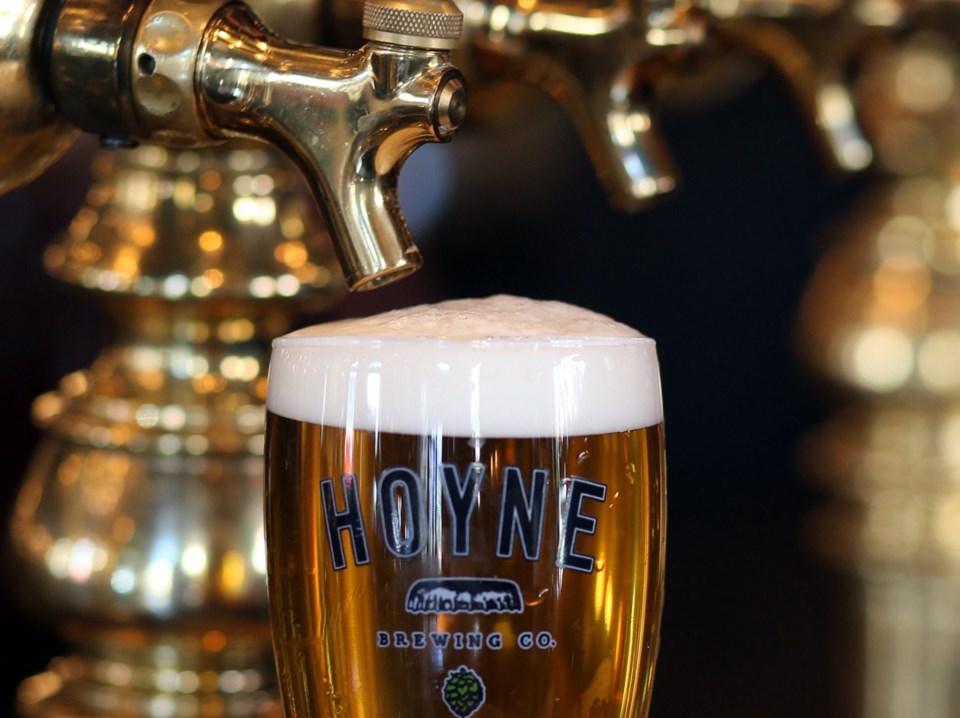 Underage, undercover liquor inspectors are making busts at an increasing rate, according to the latest report from the liquor control branch.
Underage, undercover liquor inspectors are making busts at an increasing rate, according to the latest report from the liquor control branch.
Their forays into restaurants and bars have been so successful that the overall compliance rate is dropping compared to the first year the project was launched.
It has been three years since the law was changed to allow the Liquor Control and Licensing Branch to use real minors during inspections, rather than young adults who just looked like minors. The former system had the disadvantage of not allowing any charges to be laid after infractions, since the young agents were of drinking age.
Over the years the government sent youthful adults into stores to attempt liquor purchases, the track record of compliance was dismal. The overall compliance rate — the percentage of times an agent was asked to produce two pieces of identification — was 29 per cent. It “clearly indicated an ongoing problem with age verification when purchasing alcohol,” said the branch.
So after the law was changed, it started using real minors to attempt purchases, and then levying stiff penalties on outlets when they were successful. The penalties range from a $7,500 fine to a month-long shutdown of the offending establishment.
The branch reported an 86 per cent compliance rate the first year it used minors, in 2011-12, but that has dropped to 72 per cent in the most recent year, because they are checking pubs and restaurants regularly, as well, and apparently having a field day. Government liquor stores scored 96 per cent in year one, but slipped to 82 per cent in 2013-14. Private liquor stores scored 83 per cent the first year and 78 per cent last year.
They sampled almost four times as many private stores as government stores last year, 130 versus 33, reflecting their shares of the market. The under-age agents obtained liquor 28 times at private stores and six times at government stores.
Licensed restaurants and bars fared much worse, with compliance rates barely over 50 per cent. Minors bought booze in restaurants 22 times out of the 50 times they tried, and 12 out of the 26 times attempted in bars. Most of the infractions are blamed on inadequate training and supervision.
So overall, the compliance rate is much better than it used to be when no penalties could be imposed even after purported minors found infractions. But it has dropped over three years as they check different venues where booze is served.
The branch appears to be enthusiastic about using minors as agents, saying it’s an effective and efficient method for enforcing age-of-sale laws. The latest report said as licensees become more aware that minors are being used as agents, the expectation of ID checks should increase the rate at which they are made.
Based on more than 70 infractions found by minor agents last year, most of which carried a minimum fine of $7,500, the plan is to press on.
“The LCLB believes that growing awareness of the minors program, together with a strong likelihood of apprehension and significant penalties, has become an effective strategy in preventing the sale of liquor to minors.”
The branch said the liquor policy review over the last year confirmed the usefulness of the program. That review also led to a general relaxation of various restrictions on alcohol sales, including what the branch calls new points of entry for minors. Families can eat in some pubs, grocery stores will soon be selling booze, restaurants can serve drinks only after a certain time, spas, cooking schools and galleries will be able to serve drinks, beer garden fences are coming down and liquor will be more generally available.
It’s not hard to guess what will happen to the general compliance rate. If it was slipping under the relatively strict old rules, under which 35 inspectors policed more than 10,000 licensed outlets, it will likely drop some more once the more relaxed approach and wider availability come into play.



